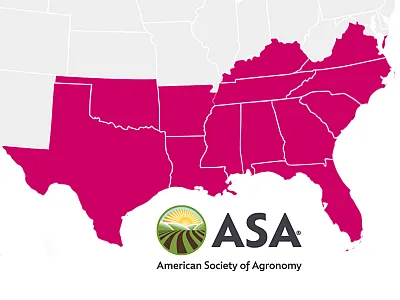Ergot in Pacific Northwest Grass Seed Crops

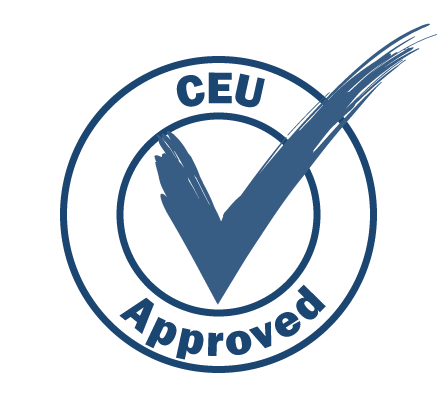
Ergot is a floral disease of grasses and a persistent problem in many cool-season grass seed production systems. The disease is particularly important and challenging in irrigated perennial ryegrass and Kentucky bluegrass seed production systems in Oregon and Washington. This article will discuss ergot biology, epidemiology, and management in grass seed crops as well as current and future research efforts. Earn 1 CEU in Integrated Pest Management by reading this article and taking the quiz.
The U.S. Pacific Northwest states of Oregon and Washington are significant producers of cool‐season grass seed, which is grown for livestock forage, home and commercial lawns, and recreational and sporting turf. Perennial ryegrass (Lolium perenne) and Kentucky bluegrass (Poa pratensis) are two of the major cool‐season grass species grown in the region. Oregon is a world leader in perennial ryegrass seed production where approximately 66,770 acres were grown in 2021 with an estimated value of over $141 million (Losh, 2023). In 2017, Washington and Oregon ranked first and second in the U.S. for Kentucky bluegrass seed production, respectively, with a combined production of more than 52,000 acres (USDA‐NASS, 2017).
Ergot is a floral disease of grasses and a persistent problem in many cool‐season grass seed production systems (Alderman et al., 1996, 1998). The disease is particularly important and challenging in irrigated perennial ryegrass and Kentucky bluegrass seed production systems in Oregon and Washington. The primary causal agent, the plant pathogenic fungus Claviceps purpurea, has a wide host range in North America that includes many important grains grown for human and livestock consumption (e.g., rye and wheat) as well as numerous forage, turf, and weedy grass species (Alderman et al., 2004; Menzies & Turkington, 2015). Another Claviceps species, C. humidiphila, has also been observed causing ergot in Kentucky bluegrass seed crops (Dung et al., 2021). The pathogen can reduce seed yield by as much as 5 to 10% (Alderman et al., 1998), which equates to annual economic losses ranging from $9,118,650 to $18,237,300 in perennial ryegrass and Kentucky bluegrass seed crops produced in Oregon (Losh, 2023).
Ergot also causes economic losses after harvest. Seed lots contaminated with ergot often require repeated cleanings to remove sclerotia, resulting in increased seed losses during cleaning operations as well as additional time and labor costs. Highly infested seed lots are not certified (i.e., given recognition by the state for genetic purity, identity, and general level of quality of the seed), and seed screenings (i.e., plant material left over from the seed‐cleaning process) cannot be pelletized to be sold as feed if high amounts of ergot alkaloids, which are toxic to livestock, are present. Growers reported losing up to $75/ac from seed lots during the repeated cleanings that are required to remove ergot, resulting in postharvest losses of up to $6,774,750 in Oregon alone (Losh, 2023).
Ergot Biology and Epidemiology in Grass Seed Crops
The ergot pathogen infects unfertilized flowers of grasses and grains, resulting in the production of fungal structures, called sclerotia, instead of seed (Figure 1). Sclerotia are the overwintering structures of the fungus (Figure 2). Mature sclerotia fall to the soil and require a chilling period at or near 32 to 41°F of some weeks or months for optimal germination (Uppala et al., 2016), which precludes sclerotia that are produced in one year from participating in the disease cycle until the following season. Sclerotia begin to germinate as spring temperatures warm above freezing (Alderman, 1993; Vladimirsky, 1940) and produce fruiting bodies called capitula (Figure 3), which in turn, release hundreds to thousands of airborne ascospores that serve as primary inoculum. Capitula may grow to the soil surface from sclerotia that are buried as deep as 0.75 inches below the soil surface, but typically most sclerotia are situated at more shallow depths, which allow for the successful production and release of ascospores.
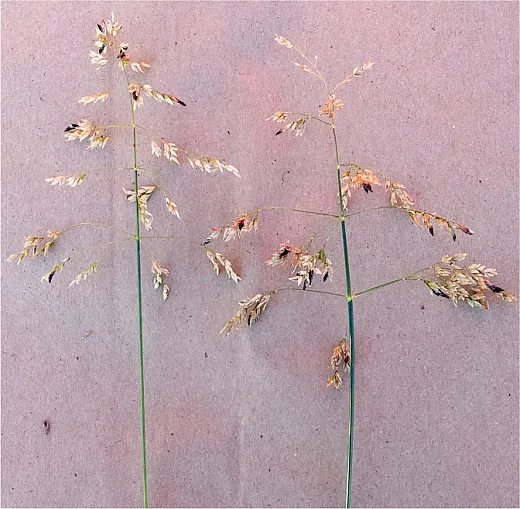
Air and soil temperatures in the spring can affect the timing, duration, and quantity of capitula production during host anthesis (Markhasseva, 1936). Research in the lower Columbia Basin of Oregon revealed that most ascospores were observed when minimum soil temperatures were between 61.2 and 68.7°F and maximum soil temperatures were between 67.3 and 79.0°F (Dung et al., 2017). Air temperature, which is often easier to measure than soil temperature, was also strongly correlated with ascospore production events. However, in rainfed production areas of the Willamette Valley in western Oregon, ascospore release in the field typically occurred two to three days after a rain event and was not correlated with air temperature or relative humidity (Alderman, 1993).
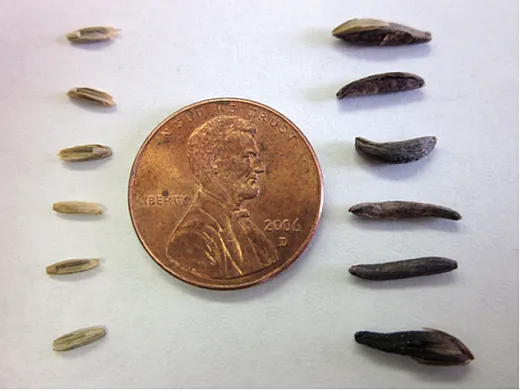
Since the ergot fungus only infects unfertilized flowers, ascospore production by the fungus must coincide with the flowering period of susceptible grass hosts for infection to successfully occur. However, the timing and duration of spore production and host anthesis can vary among regions and years. In some years, the timing of spore release and host anthesis does not coincide, resulting in little to no ergot. Environmental conditions can contribute to this lack of synchrony between host anthesis and pathogen spore production, and spore trapping and environmental data have been used to identify environmental factors that contribute to the germination of ergot sclerotia and ascospore release by the fungus, resulting in a model to determine when ascospores are likely to be released.
A degree‐day model that predicted ergot ascospore presence in the lower Columbia Basin of Oregon was developed using such data from perennial ryegrass seed crops in the lower Columbia Basin of Oregon (Dung et al., 2017). On average, the degree‐day model accounted for 93% of ascospores produced during the grass seed production season in the region. Such predictive models could be useful for ergot management if used to improve the timing of fungicide applications for chemical control.
Germination is promoted by moist soil conditions the previous fall, and especially by moist soil conditions when sclerotia are ready to germinate in the spring. Capitula develop within a few days at higher relative humidity, but this process may be greatly extended if temperatures and/or soil moisture is limiting. Under optimal environmental conditions, individual sclerotia might be expected to undergo multiple germination events. If soil moisture remains sufficient and relative humidity is high, perithecia may again begin releasing ascospores within a few more days, but this process may be delayed during conditions of low relative humidity or limited soil moisture (Vladimirsky, 1940). In irrigated production regions, ascospore production within the crop canopy may be promoted during irrigation cycles, particularly if ideal soil moisture status is extended by the soil's water retention characteristics and/or associated precipitation.
Data collected in central Oregon suggested that soil moisture, either as irrigation or precipitation events, appeared to be associated with subsequent ascospore production two to three days later. Incorporating soil moisture and temperature parameters into existing predictive models may improve the forecasting ability in certain regions; however, differences in soil types among the four production areas would also need to be considered.
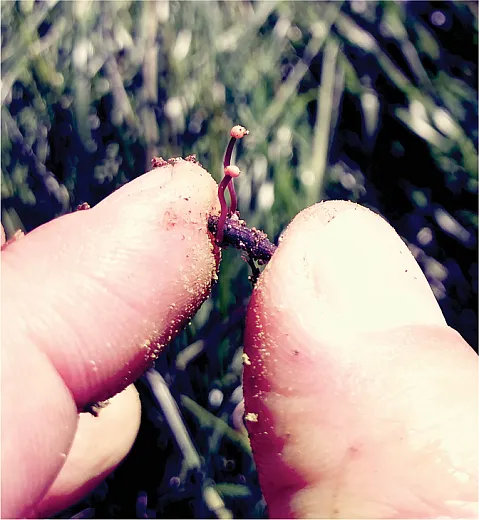
After primary infection occurs by airborne ascospores, infected flowers produce asexual spores called conidia. Conidia are exuded from infected ovaries, along with plant sap, in a matrix referred to as honeydew. Honeydew can serve as secondary inoculum if dispersed to healthy flowers within a season, leading to multiple infection cycles during the flowering period (Bandyopadhyay et al., 1998; Menzies & Turkington, 2015). Honeydew can be dispersed via irrigation, precipitation, or through physical contact between flowers. The high sugar content of honeydew is also believed to promote insect foraging and facilitate pathogen dispersal via insect movement. Insects that are attracted to and feed on honeydew, specifically moths and flies, can become contaminated both externally and internally with Claviceps conidia (Mower & Hancock, 1975; Kaur et al., 2019).
Although ascospores are typically considered to be the major source of primary inoculum in the spring, it is possible that conidia in honeydew can also serve as primary inoculum, particularly if earlier‐flowering grass seed cultivars or weed species become infected and produce honeydew that is subsequently transmitted to later‐flowering grass seed cultivars. Data from grass seed production fields in Oregon and Washington indicated that anywhere between 7 and 80% of infections could be attributed to conidia. A better understanding of the relative importance of ascospores and conidia in the epidemiology of ergot in grass seed crops is needed to develop improved management strategies for both sources of potential inoculum.
Management of Ergot in Grass Seed Crops
Cultural control tactics used to reduce ergot include planting ergot‐free seed, crop rotation, seed cleaning and conditioning practices, and controlling weedy hosts of C. purpurea. Fungicides are applied to protect the ovaries of grass flowers, the only susceptible part of the plant, from infection. Multiple preventative fungicide applications are often required during flowering for disease suppression. Consequently, the timing of initial and subsequent protective fungicide applications are important factors that contribute to their efficacy.
One of the major challenges of ergot management is the extremely large number of sclerotia that are left in perennial grass seed fields after harvest; one study found that between 16,000 and 480,000 sclerotia per acre were deposited in perennial ryegrass fields during harvest events (Dung et al., 2016). The perennial nature of many grass seed cropping systems in the Pacific Northwest precludes the use of certain management tactics such as annual crop rotation and burying sclerotia through tillage. Open field burning, which can reduce the viability of sclerotia, is not performed in many areas due to increasing concerns over the negative impacts of smoke on human health and the environment (Chastain et al., 1997).
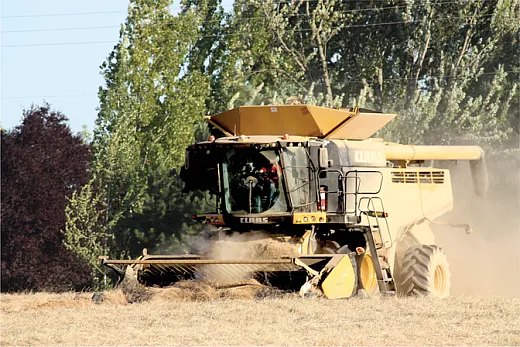
Surveys of grass seed growers in Oregon and Washington revealed that most growers use multiple tactics to try to manage ergot (Walenta et al., 2015); however, ergot continues to be a major disease issue affecting irrigated grass seed production systems in these states. In addition to using ergot‐free seed for planting, controlling weedy and volunteer hosts, and rotating with non‐hosts, growers typically make multiple fungicide applications during anthesis (Walenta et al., 2015). In the U.S. Pacific Northwest, approximately 95% of grass seed growers utilize fungicides to manage ergot (Walenta et al., 2015), and on average, growers reportedly spend $28 to $70 or more per acre for at least two fungicide applications to control ergot (Walenta et al., 2015); this translates to fungicide costs between $2,529,240 and $6,323,100 for ergot management in perennial ryegrass and Kentucky bluegrass seed crops in Oregon alone (Losh, 2023). When fungicide expenses, yield losses due to seed replacement, and costs and losses associated with seed cleaning to remove ergot are considered together, the disease can result in annual economic losses in Oregon of up to $31,335,150 (Losh, 2023).
Current and Future Research Efforts
Although ergot control in grass seed production in Oregon and Washington has been improved in recent years, the disease is still a major problem for growers, seed cleaners, and end‐users of grass seed and grass seed by‐products. Cultivars with shortened and uniform flowering periods, or cultivars that flower outside of peak periods of ascospore production, have the potential to escape ergot infection and may form a basis for breeding cultivars that are less susceptible to ergot (Kaur et al., 2015). There is still a need for new fungicide chemistries, novel fungicide application strategies, and biocontrol options to be explored (Cheng et al., 2019; Dung et al., 2018a; Kaur et al., 2016).
More informed and judicious fungicide applications that are based on predictive models and the presence or absence of ergot inoculum can help to reduce the total number of fungicide applications, limit the potential for fungicide resistance development in C. purpurea populations, and improve ergot management. Incorporating soil moisture into predictive models may improve the forecasting ability in certain regions; however, differences in soil types among the various production areas will also need to be considered. More sensitive methods of detecting ascospores (Dung et al., 2018b) and conidia (Kaur et al., 2019), together with frequent and effective outreach to growers (Walenta et al., 2015), can also be used in conjunction to improve ergot management. Increasing grower knowledge regarding the economic benefits of disease‐forecasting systems and decision‐aid tools to inform fungicide application decisions should further promote the adoption and integration of risk‐based IPM strategies.
References
Alderman, S.C. (1993). Aerobiology of Claviceps purpurea in Kentucky bluegrass. Plant Disease, 77, 1045–1049.
Alderman, S.C., Coats, D.D. & Crowe, F.J. (1996). Impact of ergot on Kentucky bluegrass grown for seed in northeastern Oregon. Plant Disease, 80, 853–855.
Alderman, S.C., Coats, D.D., Crowe, F.J. & Butler, M.D. (1998). Occurrence and distribution of ergot and estimates of seed loss in Kentucky bluegrass grown for seed in central Oregon. Plant Disease, 82, 89–93.
Alderman, S.C., Halse, R.R. & White, J.F. (2004). A reevaluation of the host range and geographical distribution of Claviceps species in the United States. Plant Disease, 88, 63–81.
Bandyopadhyay, R., Frederickson, D.E., McLaren, N., Odvody, G.N. & Ryley, M.J. (1998). Ergot: A new disease threat to sorghum in the Americas and Australia. Plant Disease, 82, 356–367.
Chastain, T.G., Kiemnec, G.L., Cook, G.H., Garbacik, C.J., Quebbeman, B.M. & Crowe, F.J. (1997). Residue management strategies for Kentucky bluegrass seed production. Crop Science, 37, 1836–1840.
Cheng, Q., Dung, J. & Frost, K. (2019). Evaluation of fungicides for control of ergot on Kentucky bluegrass in Oregon, 2018 (Plant Disease Management Report 13).
Dung, J.K.S., Alderman, S.C., Kaur, N., Walenta, D.L., Frost, K.E. & Hamm, P.B. (2017). Identification of weather factors related to Claviceps purpurea ascospore production and development and validation of predictive environmental favorability index models. Plant Disease, 101, 895–906.
Dung, J.K.S., Alderman, S.C., Walenta, D.L. & Hamm, P.B. (2016). Spatial patterns of ergot and quantification of sclerotia in perennial ryegrass seed fields in eastern Oregon. Plant Disease, 100, 1110–1117.
Dung, J.K., Duringer, J.M., Kaur, N., Scott, J.C., Frost, K.E., Walenta, D.L., Alderman S.C., Craig A.M., Hamm P.B. & Hamm, P.B. (2021). Molecular and alkaloid characterization of Claviceps purpurea sensu lato from grass seed production areas of the US Pacific Northwest. Phytopathology, 111, 831–841.
Dung, J.K., Kaur, N., Walenta, D.L., Alderman, S.C., Frost, K.E. & Hamm, P.B. (2018a). Reducing Claviceps purpurea sclerotia germination with soil‐applied fungicides. Crop Protection, 106, 146–149.
Dung, J.K., Scott, J.C., Cheng, Q., Alderman, S.C., Kaur, N., Walenta, D.L., Frost, K.E. & Hamm, P.B. (2018b). Detection and quantification of airborne Claviceps purpurea sensu lato ascospores from Hirst‐type spore traps using real‐time quantitative PCR. Plant Disease, 102, 2487–2493.
Kaur, N., Cating, R.A., Rondon, S.I., Scott, J.C., Alderman, S.C., Walenta, D.L., Frost K.E., Hamm P.B. & Dung, J.K. (2019). Dispersal potential of ergot dpores by insects goraging in the perennial ryegrass fields in the Columbia Basin of Oregon and Washington. Crop, Forage & Turfgrass Management, 5, 1–5.
Kaur, N., Dung, J.K.S., Alderman, S.C., Walenta, D.L., Frost, K.E. & Hamm, P.B. (2015). Evaluation of perennial ryegrass cultivars for klendusity to ergot. Phytopathology, 105, S4.70.
Kaur, N., Dung, J.K.S., Walenta, D.L. & Frost, K.E. (2016). Prospects for ergot disease management with biocontrol products. In N. Anderson, A. Hulting, D. Walenta & M. Flowers (Eds.) Seed production research (pp. 38–40, Ext/CrS 153). Oregon State University.
Losh, D. (2023). Oregon agricultural statistics. Oregon Department of Agriculture. https://www.oregon.gov/oda/shared/Documents/Publications/Administration/ORAgFactsFigures.pdf. Markhasseva, M.V.A. (1936). A method for the prognosis of the development of ergot (Claviceps purpurea Tul.). Summ. Sci. Res. Wk Inst. Pl. Prot. Leningr, 1935, 535–537.
Menzies, J.G. & Turkington, T.K. (2015). An overview of the ergot (Claviceps purpurea) issue in western Canada: Challenges and solutions. Canadian Journal of Plant Pathology, 37, 40–51.
Mower, R.L. & Hancock, J.G. (1975). Sugar composition of ergot honeydews. Canadian Journal of Botany, 53, 2813–2825.
Uppala, S., Wu, B.M. & Alderman, S.C. (2016). Effects of temperature and duration of preconditioning cold treatment on sclerotial germination of Claviceps purpurea. Plant Disease, 100, 2080–2086.
USDA‐NASS. (2017). NASS—Quick stats. USDA National Agricultural Statistics Service. https://data.nal.usda.gov/dataset/nass‐quick‐stats Vladimirsky, S.V. (1940). Geographical distribution and zones if injurious influence of ergot on rye in the U.S.S.R. Rev. Appl. Mycol., 19, 209.
Walenta, D.L., Kaur, N., Alderman, S.C., Frost, K.E., Hamm, P.B. & Dung, J.K.S. (2015). Using information technology to advance integrated ergot disease management in perennial grass seed cropping systems. In N. Anderson, A. Hulting, D. Walenta, M. Flowers, & C. Sullivan (Eds.) Seed production research (pp. 35–38, Ext/CrS 152). Oregon State University.
Self-Study CEU Quiz
Earn 1 CEUs in Integrated Pest Management by taking the quiz. For your convenience, the quiz is printed below. The CEU can be purchased individually, or you can access as part of your Online Classroom Subscription.
- A floral disease of grasses, ergot is particularly challenging in irrigated perennial ryegrass and Kentucky bluegrass seed production systems in Washington and Oregon.
- True.
- False.
- Sclerotia are
- the fungal structures resulting from the ergot pathogen.
- the fruiting bodies that develop from fungal structures.
- the spores released by the fruiting bodies.
- a class of fungicides that target ergot.
- How does the ergot pathogen infect grasses?
- Through the root system.
- Through the leaf.
- Through unfertilized flowers.
- All of the above.
- The factors correlated with the release of spores that cause ergot can vary from area to area. Which of the following is NOT mentioned in this story as a factor?
- Soil temperature.
- Air temperature.
- Precipitation.
- Time of day.
- The release of ergot spores and the anthesis of target grasses generally coincide.
- True.
- False.
- Scientists have developed a predictive model to estimate when ergot spores will be released based on environmental factors, which could help inform timing of fungicide applications. In a study cited in this article, what percentage of spores produced during the grass seed production season did the model successfully account for?
- 23%.
- 45%.
- 72%.
- 93%.
- After a plant is infected, the ovaries of infected flowers exude asexual spores that, mixed with plant sap, can serve as a secondary inoculum and lead to multiple infection cycles during one flowering period. What is this mix of sap and exuded spores known as?
- Conidia.
- Honeydew.
- Ergosis.
- Secondary sap.
- In Oregon, ergot has resulted in annual economic losses upwards of $31 million. What contributes to these losses?
- The cost of fungicide.
- Yield losses due to seed replacement.
- Cost and lost seeds associated with seed cleaning.
- All of the above.
- After harvesting seeds from an ergot-impacted field, a large number of sclerotia are left behind, posing big challenges to farmers trying to manage the disease. According to one study of a perennial rye grass field, what was the upper range of the number of sclerotia left behind per acre?
- 240,000.
- 480,000.
- 620,000.
- 1 million.
- Incorporating soil moisture into disease-predicting models may improve the forecasting ability in certain regions.
- True.
- False.
Text © . The authors. CC BY-NC-ND 4.0. Except where otherwise noted, images are subject to copyright. Any reuse without express permission from the copyright owner is prohibited.




